Cycling in the rain
11 watertight tips for cycling in bad weather
Anyone riding a bike on wet roads or forest tracks has to anticipate a number of pitfalls: slippery surfaces, poor visibility and wet socks. For those who are undaunted, we have compiled 11 tips that make cycling a little more pleasant and safer in the rain.
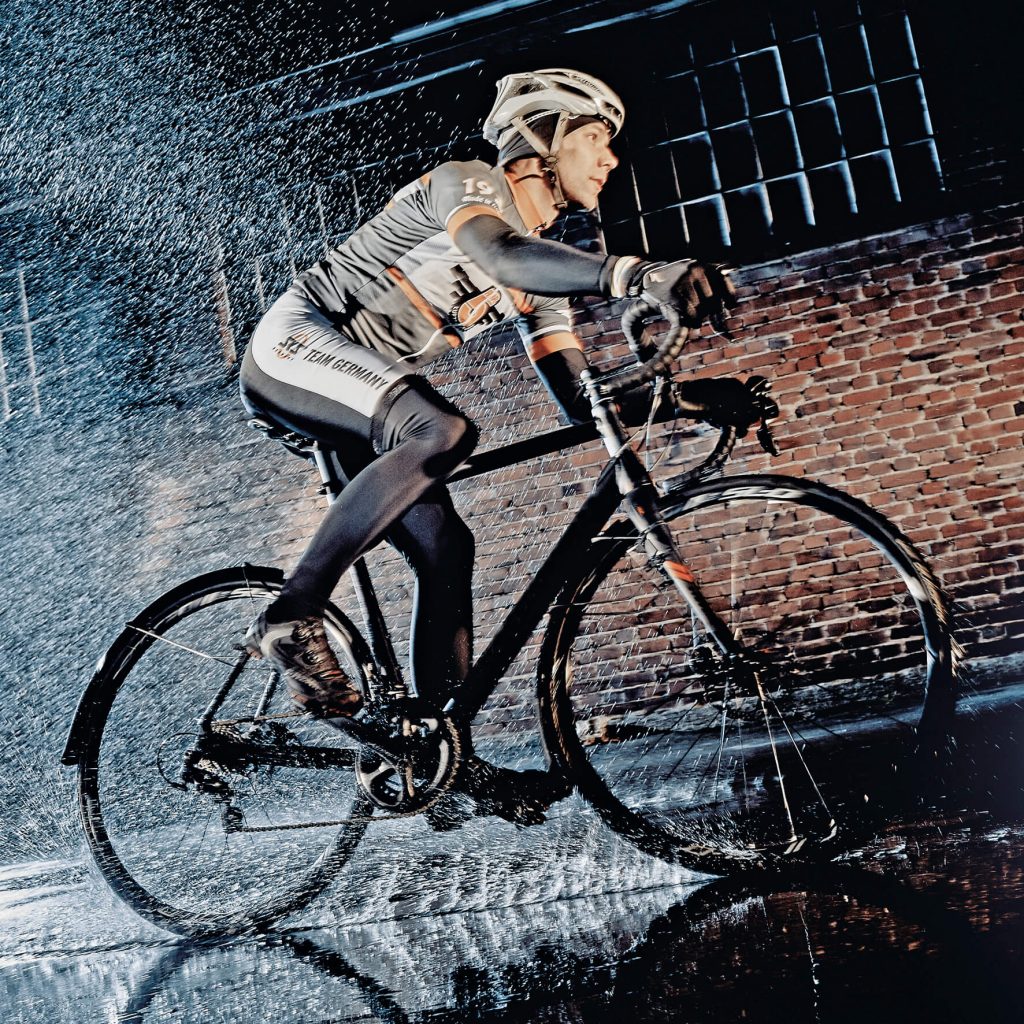
1. Reduce tyre pressure
Bike tyres with lower pressure have more grip. You should therefore reduce the tyre pressure by about 20% in wet conditions. You can adjust the pressure optimally with a floor pump, such as the AIRWORX 10.0 with a pressure gauge. The AIRCHECKER digital air pressure gauge is also very useful here.
2. Cycle with all-weather tyres
Rain or all-weather tyres with a rough profile are available not only for cars, but also for bicycles. In general, you should replace bicycle tyres that are more than five years old. Attention: New tyres may initially be slippery and may only be broken in during dry weather.
3. Observe the road surface
Autumn leaves on the road? Now the road surface can be particularly slippery. Also be careful with white markings, zebra crossings, manhole covers and paving stones – and avoid cycling through puddles. Sometimes a nasty pothole may lurk underneath them.
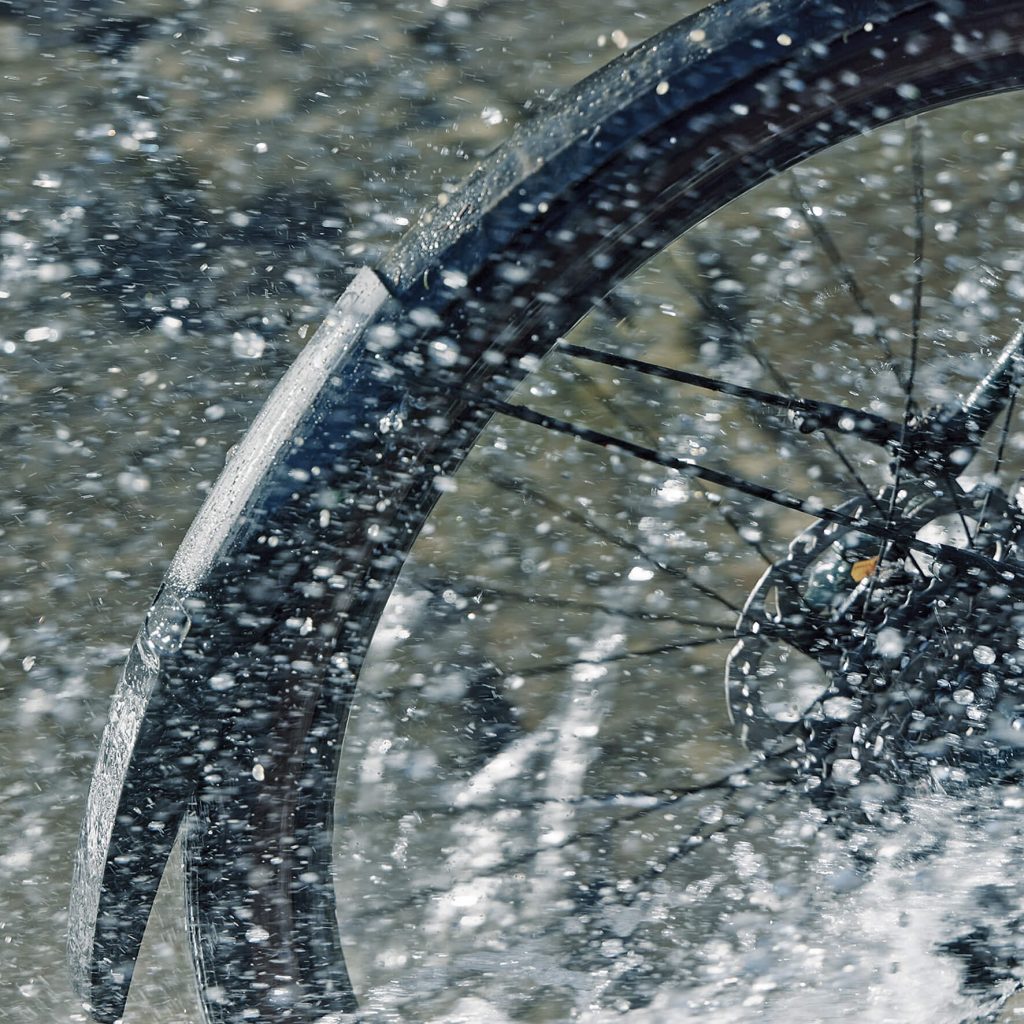
4. Adjust your cycling style
The most important thing is to cycle with foresight. In wet weather, the braking distance is also slightly longer with disc brakes. Brake BEFORE a bend rather than IN a bend. When cycling, do not lean into the curve, but keep your weight positioned as centrally as possible. Abrupt braking manoeuvres should be avoided.
5. Be visible
Bei Regen bist du für andere weniger gut sichtbar. Mit reflektierender Ausrüstung sowie einem When it rains, you are less visible to others. With reflective equipment and a powerful front and rear light, you will get yourself noticed in road traffic. You will be double-protected with the NIGHTBLADE mudguard with an integrated rear light.
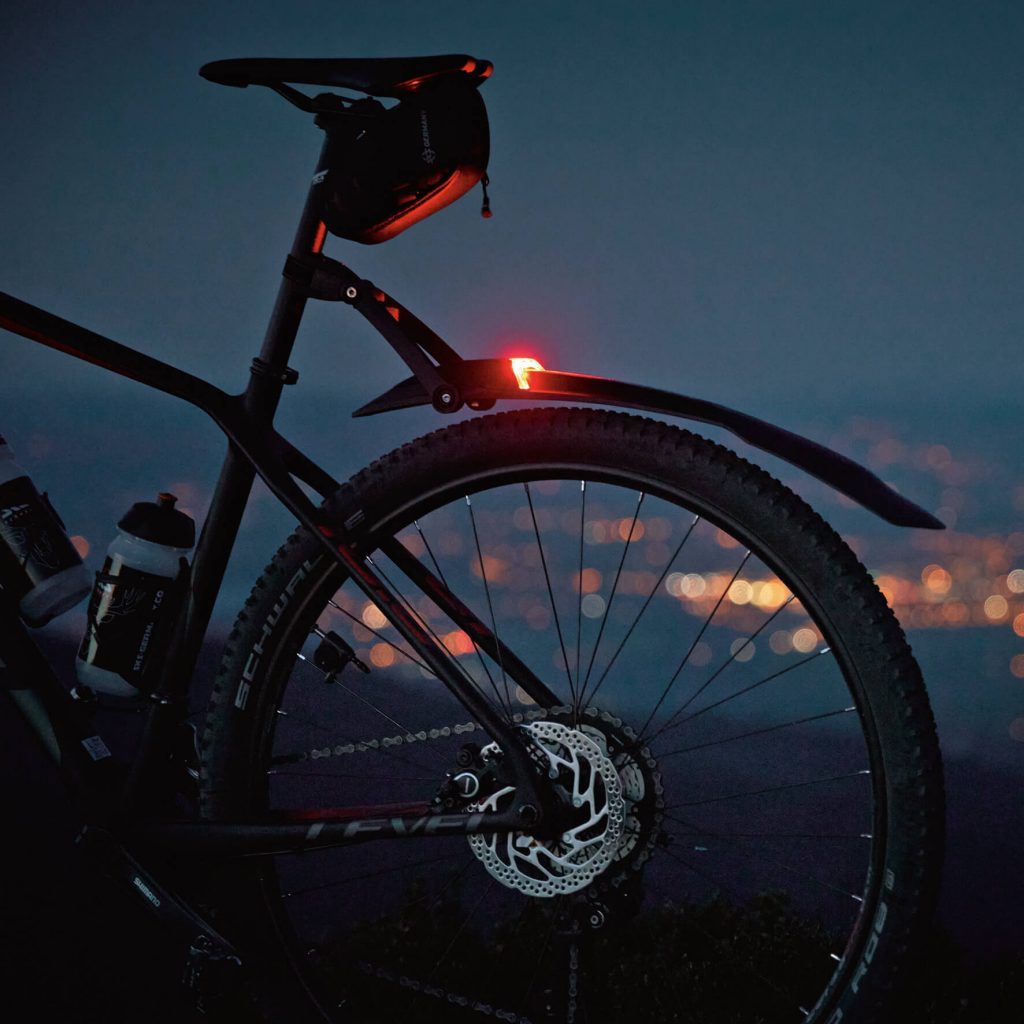
6. Wear rainproof clothing
If moisture is absorbed into your clothing, an unpleasant cold sensation will spread all over your body. So make sure that you stay warm under not too many layers of water and windproof clothing. Waterproof overshoes, neoprene gloves and cycling glasses protect you from rain, dirt and wind.
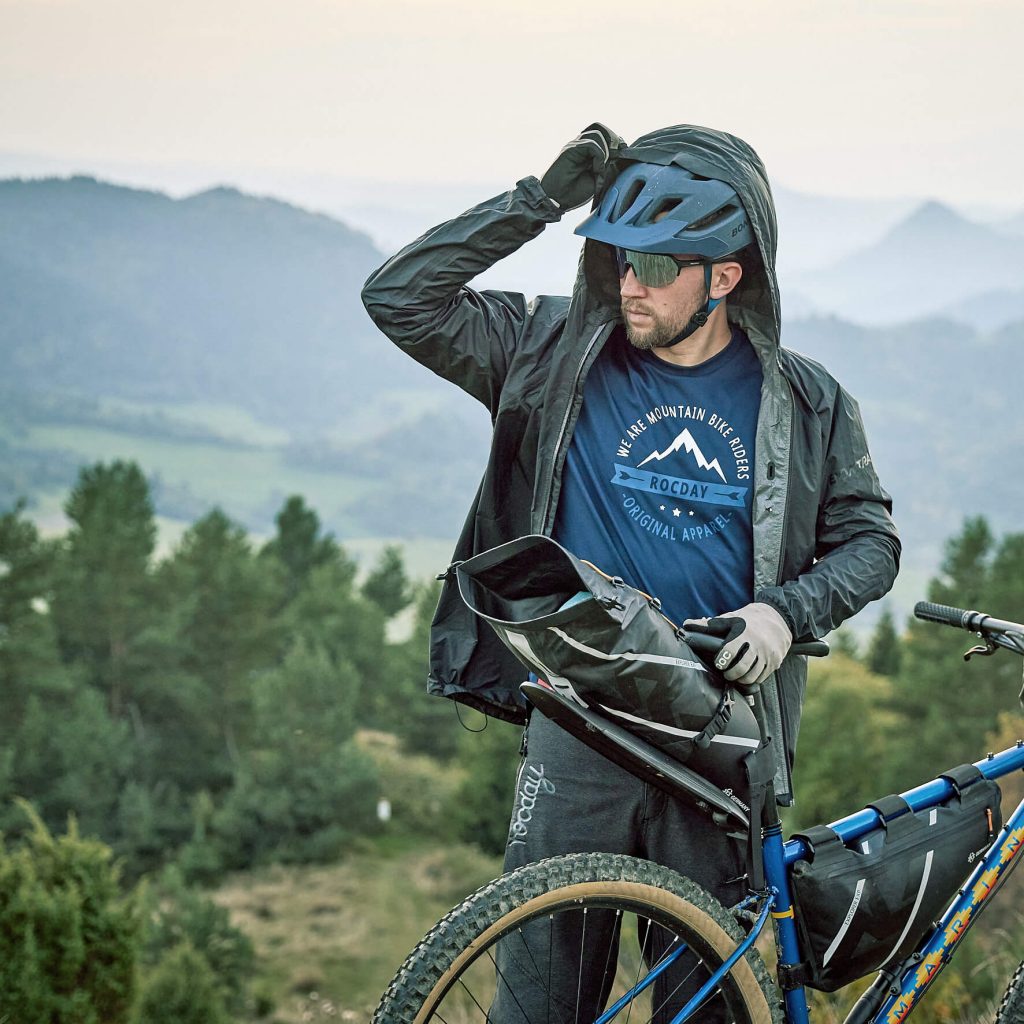
7. Use mudguards
Beim Fahrradfahren kommt die Nässe nicht nur von oben, sondern auch von unten. BLUEMELS Schutzbleche schützen City- und Trekkingfahrer vor Spritzwasser. Mountainbiker When cycling, the moisture comes not only from above, but also from below. BLUEMELS mudguards protect city and trekking riders from spray water. Mountain bikers swear by the MUDROCKER while racing cyclists are optimally protected with the RACEBLADE PRO XL.
8. Use waterproof equipment
To keep your items dry, your backpack or bag should be made of waterproof material, such as the EXPLORER EXP. SADDLEBAG, which comes with a clip-on mudguard. We recommend waterproof covers for your mobile phone, such as the COM/SMARTBAG or the SMARTBOY.
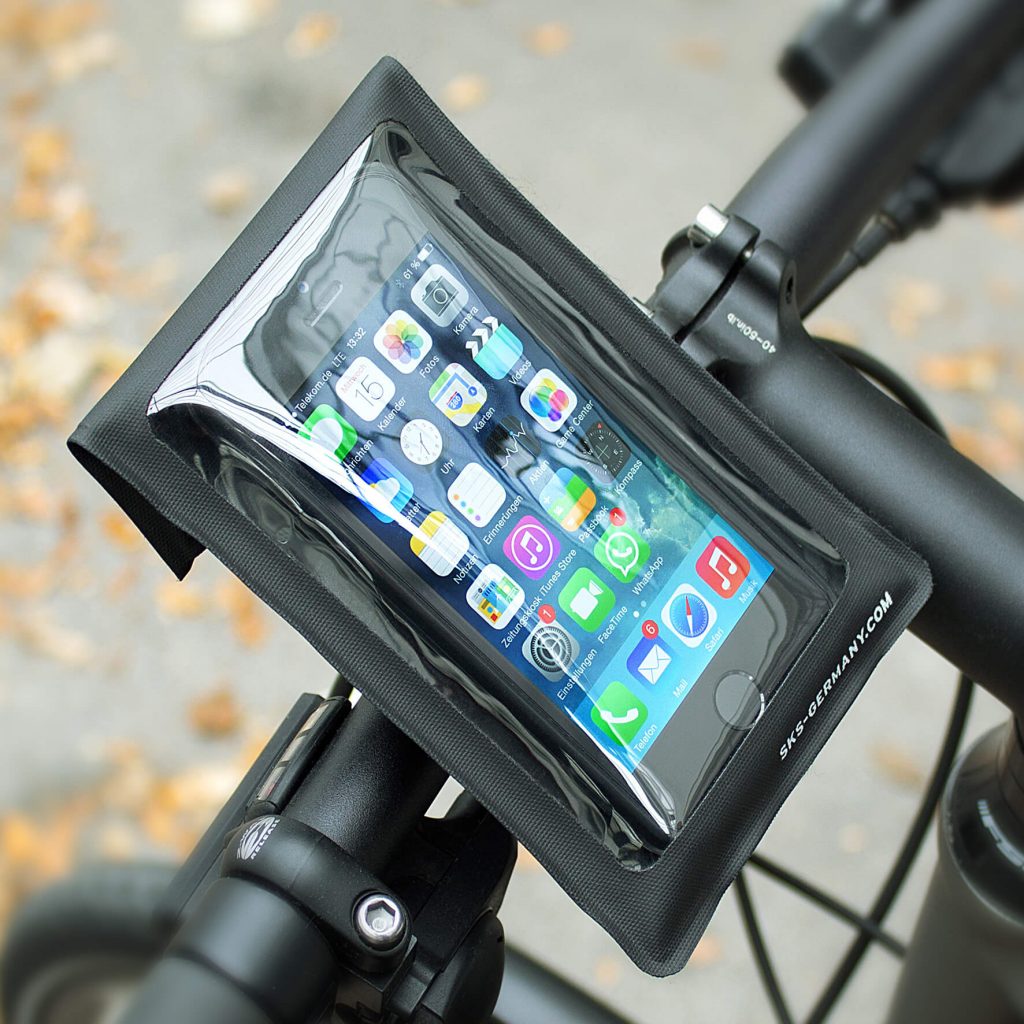
9. Plan your range
Für E-Bikes gilt: Je nasser die Fahrbahn desto größer der Widerstand, insbesondere mit For e-bikes: The wetter the road surface, the greater the resistance, especially with reduced tyre pressure (1 bar less = range is reduced by 15 km). You should also start with minimal support as the motor thrust will cause the wheels to spin faster in wet conditions.
10. Maintain your bike
Regularly check that the brakes and tyres are in good condition. Give your bike a little spa treatment after your muddy bike tour. In addition to cleaner, lubricant spray and long-term preservative, the SKS bicycle care range also includes bike chain oil with a practical applicator.
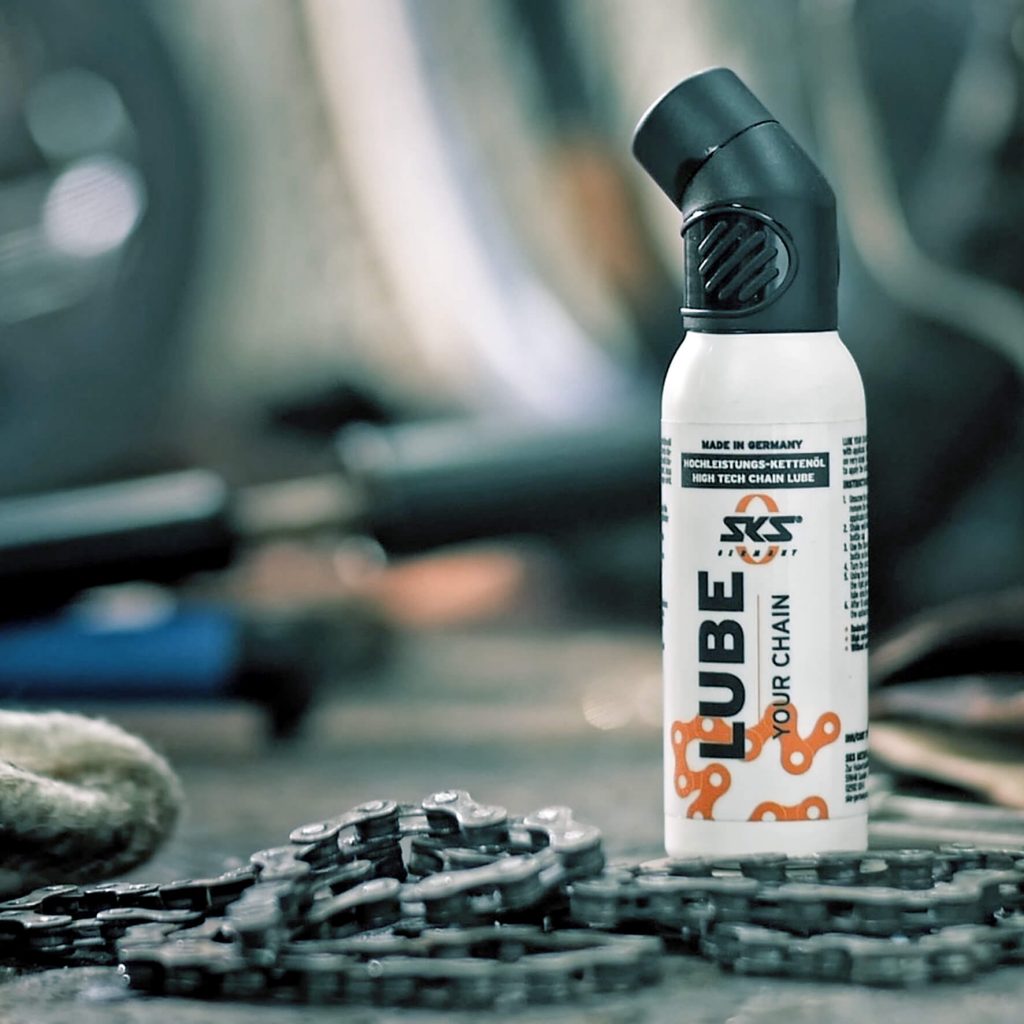
11. Look forward to a hot shower
You’ve conquered your weaker self, but you feel soaked to the skin? Get out of your clothes and step into a hot shower – with a great feeling of having successfully endured the wind and weather.
TIP! The SKS MYBIKE app warns you about bad weather so you can take shelter in good time when a storm is brewing. You can download the app for free from the App Store or the Google Play Store.

